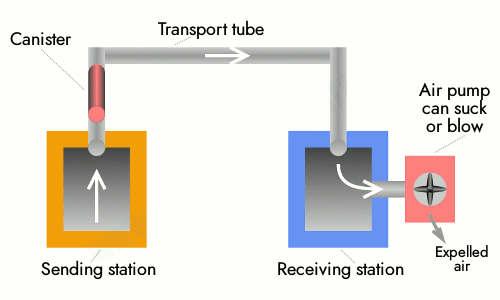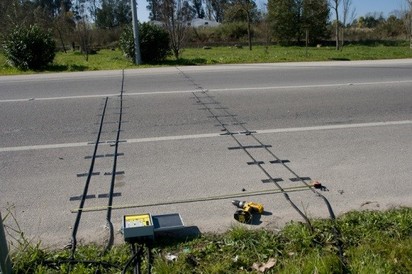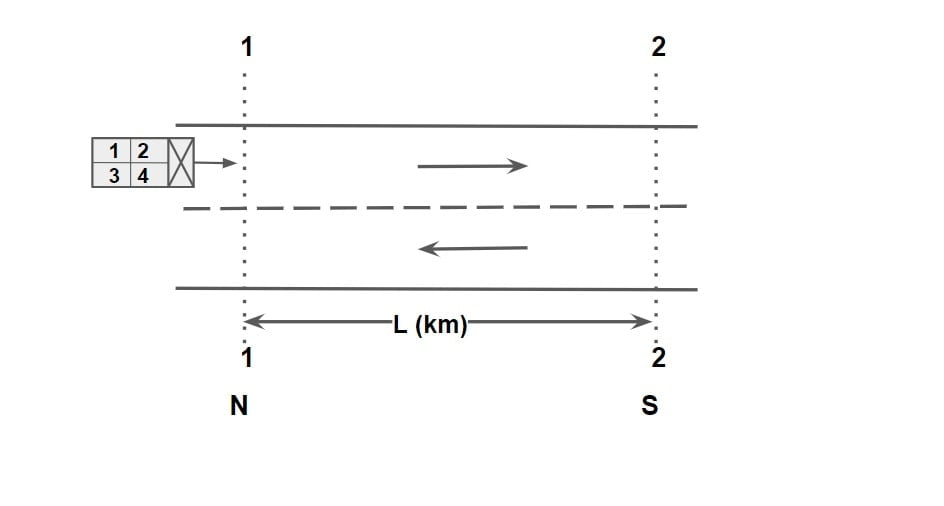Various methods of traffic volume survey
1. Automatic counters (Mechanical counters)
These may be either fixed (permanent) type or portable type. The mechanical counter can automatically record the total number of vehicles crossing a section of the road in a desired period. The working may be by the effect of impulses or stimuli caused by traffic movements on a pneumatic hose placed across the roadway.
Various types of automatic counters are :
- Pneumatic tube (Road tube)
- Magnetic device
- Electric contact device
- Ultrasonic device
- Co-axial cable
- Radar
- Infra-red device
- Photo-electric device
2. Manual counters
In this method, the members of field team collect the necessary information on the prescribed record sheets at the selected points of roadway. It gives classified volume of each category of traffic, namely, buses, cars, trucks, autorickshaws, cycles, scooters, pedestrians, etc. which can not be collected by mechanical counters. The number of occupants in vehicles and direction of each class of traffic at intersection is also be recorded.
Various types of manual counters are :
- Moving observer method (Floating car method)
- Videography or photography method
➤ Pneumatic tube (Road tube)
- A thick walled flexible tube (10-12 mm dia., 3 mm thick) with one end sealed is clamped to the road surface at right angles to the pavement.
- The other end of the tube is connected to a diaphragm or counter.
- At the sealed end a small air release hole is provided to avoid bounced impulses.
- As a vehicle wheel crosses the tube it compresses it, causing an air ‘shock wave’ to travel along the tube, operating a simple ‘make and break’ circuit of the counter as shown below.


➤ Radar
- Doppler effect is a well-known phenomenon in physics which enables detection of vehicles moving at a speed.
- When a moving object approaches or recedes from the source of a signals, the frequency of the signal received back from the moving object will be different from the frequency of the signal emmitted by the source.
- This difference in the two frequencies causes detection of a moving vehicle.
- The initial cost of this device is no doubt high, but its accuracy and reliability are good.
- It is also not damaged by the traffic.

➤ Moving observer method (Floating car method)
- Moving observer method is one in which both speed and traffic flow data are obtained by a single experiment.
- This method consists in counting the number of cars met, number of cars overtaken and the time taken to travel by the observer, once moving against the traffic and once moving along with the traffic.
- The floating car method is generally followed in India. Here we have a test car with four observers in it which is floating, i.e. which is travelling at approximately the same speed as that of the traffic.
- 1st observer equipped with two stop watches is an observer to record delays.
- 2nd observer in the car notes the causes of this delay.
- 3rd observer record the number of vehicles overtaken by the floating car or the number of vehicles that overtakes the floating car.
- 4th observer notes the number of vehicles travelling in opposite direction in each trip.

➤ Videography or photography method
- The videography is carried out for the stretch of road about 20 to 30 m. The entry and exit of the vehicle on the selected approach should be covered in the videography.
- The start time of the video is set to zero. The movement of the vehicles are recorded for an hour.
- After the end of the videography, the vehicles are counted on the screen of the computer or DVD.
- The entry time of the vehicle and exit time of the vehicle is recorded for the vehicles on the selected stretch. The distance passed by the vehicle per unit time is worked out.
- Video photography gives a permanent record of volume counts. Its analysis can be done conveniently in the office by replaying the casette on a TV monitor.

